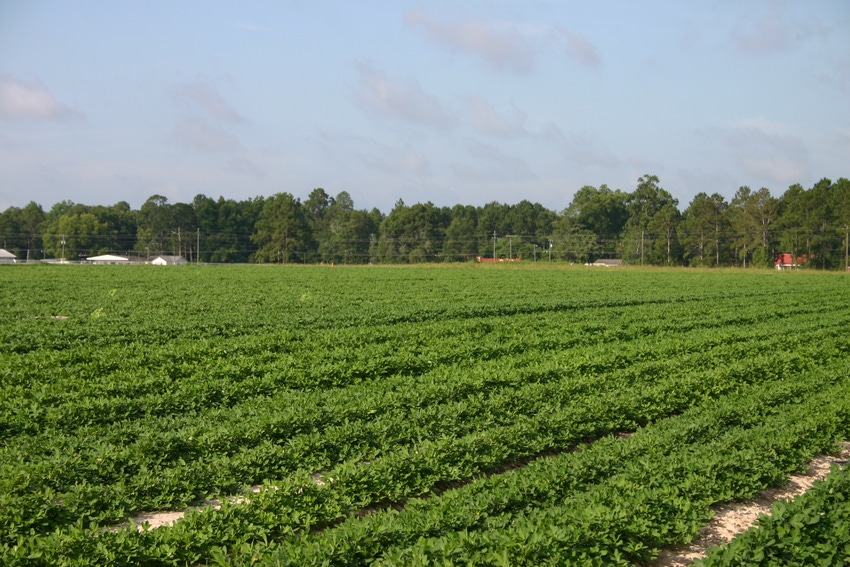August 6, 2014

Many peanut growers in the Southeast saw early season conditions this year that mirrored those seen in 2013—a cool, wet spring and heavy thrips pressure.
It was reported at this year’s U.S.A. Peanut Congress that while the peanut crop finally got off to a good start in 2014 after early weather delays, thrips pressure was greater than normal and damage was reported in many locations.
Despite fairly high thrips pressure through early June, the occurrence of tomato spotted wilt Alabama’s peanut crop appeared to be minimal, says Austin Hagan, Auburn University Extension plant pathologist.
“The number of symptomatic plants in April-planted peanuts in thrips trials at Headland and Fairhope has been very low. Due to heavy spring rains, the seed treatment and in-furrow insecticides did not perform well in Fairhope. In Headland, Thimet 20G and Temik 15G proved more effective in protecting peanuts from thrips damage with the former fungicide giving the best thrips control. With pretty good rainfall patterns, thrips-damaged peanuts will quickly outgrow the damage and yield well, pending timely rains through the rest of the summer, says Hagan.
While not ideal for peanut producers, these conditions do create opportunities for conducting thrips trials, he says.
“We conducted some thrips trials this past year at Wiregrass and at the Gulf Coast during a cool, wet spring,” says Hagan. “The weed hosts that the thrips emerged from in small grains did not dry down as quickly as normal. We didn’t have the peak flight into peanuts at the end of April that we normally might expect. It was delayed.”
Cooler weather also slowed seedling emergence and growth, he adds. “We had a perfect storm as far as weather patterns for thrips. The plants sat there long enough that some thrips control materials stopped working as the residues played out. We saw similar conditions this year,” says Hagan.
There were more thrips in the April-planted than in the May-planted peanuts this past year, he says. “Even though there were fewer thrips in May, they caused a lot more damage in peanuts. There was more tomato spotted wilt virus (TSWV) in the April-planted peanuts, as expected.”
One of the differences that showed up in 2013 was that the performance of the insecticides used for thrips control differed by planting date, says Hagan.
“The results of our 2013 trials were the reverse of what you normally would have expected to see, which contributed to a lot of the control failures. Nothing worked particularly well in May-planted peanuts.”
Hagan says it also appears in his tests that peanut varieties differ in their sensitivity to thrips. “We haven’t used that as a means of managing thrips in peanuts so far. Flavorrunner 458 appeared to have the highest incidence of thrips. This is something we’ll continue to look at.
We always see, in a high-virus situation, that going to twin rows reduces the incidence of TSWV.”
Thrips damage is not closely tied to yield response, necessarily, he says. “We had really good moisture throughout last season. So the peanuts were able to recover and grow out of thrips damage. If we had a drought, the results would have been different.”
About the Author(s)
You May Also Like




